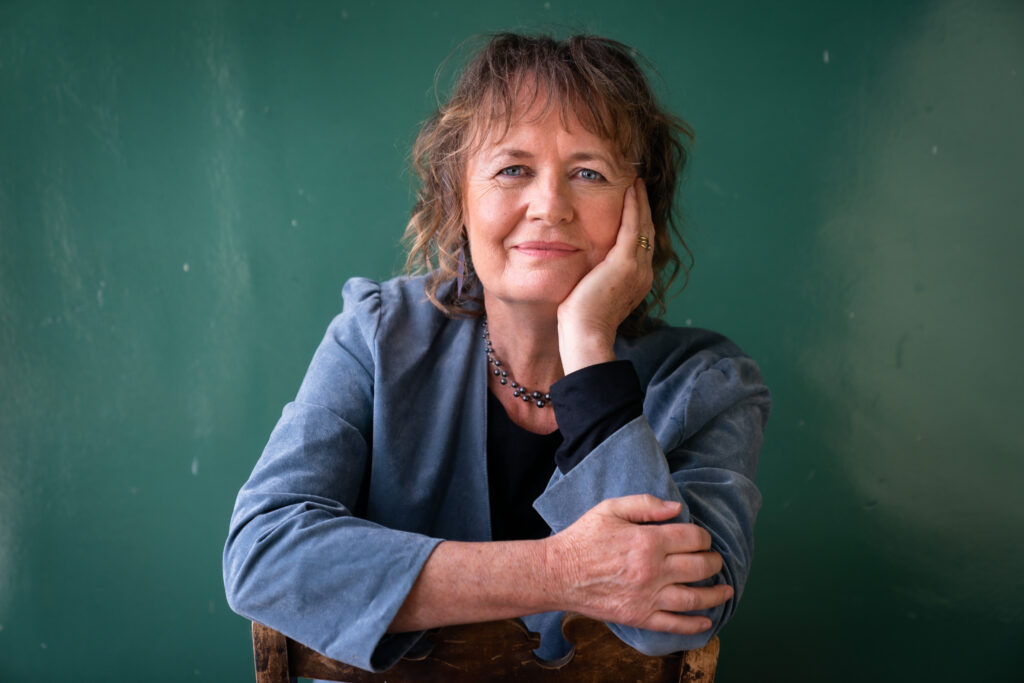
From a sinister atmosphere to joyful Christmas sounds
Composer Sally Beamish talks about the music of A Christmas Carol.
When choreographer David Bintley was tasked with creating an entirely new ballet based on Charles Dickens’ classic tale A Christmas Carol, his first question was about the music. Bintley had already collaborated with Sally Beamish on the ballet The Tempest at the Birmingham Royal Ballet.
”Sally is a very well known contemporary composer in England. When I first heard her music on my car radio, I had to pull over because it was so absorbing. I was instantly convinced that this composer should write a dance piece,” Bintley says. ”After The Tempest I really wanted to work with her again, but I felt that on this occasion her language should be tempered a little. It needed to be easier and more accessible for a family audience. It had to express the Christmas mood.”
From idea to orchestration
When Bintley contacted the composer, she was immediately interested in working together: “I started researching and planning there and then, and we had some initial conversations about the language of the music. When creating The Tempest, we already established a system, in which we first discuss each scene, then I compose it and send it to David. After another conversation, we adjust or rethink it, and once we’re both happy, we move on to the next scene.”
The subject of the ballet was interesting from both the choreographer’s and the composer’s perspectives. ”In A Christmas Carol, Dickens epitomises everything that evokes a British Christmas. The tale has become an integral part of our Christmas tradition and cultural heritage. The Victorian Christmas of the story conjures images of festive music, food, colour, and ringing bells, but also the stark contrast between the rich and the poor,” says Beamish.
When starting the composition, the choreographer gave Beamish a ‘minutage’ – like a storyboard for a film. It outlined each scene, telling her which characters will be dancing, and for how long. “We talked at length about each section and David explained his vision to me. Then I was at liberty to compose, and I sent him a draft of each scene I completed. Sometimes he had comments and requests. Sometimes the music didn’t work for him, and I had to think again. Sometimes it wasn’t what he expected, but he changed his own plans if he liked what I’d written.”
The draft of the score was finished by Christmas 2022, after which Beamish spent 6 months finalising the orchestration. “The whole process is so much more collaborative in the modern age. I could send David a mock-up of the orchestral sound, so he knew exactly what he would hear, and he could even suggest changes to the instrumentation. In the past, the composer would have to play the score on the piano to the choreographer,” Beamish says. Some slight adjustments were still needed as Bintley began to choreograph – for instance, if he needed some more space within the music. “David had been familiarising himself with the score right from the start, so any bigger changes had already been made months ago.”
Conductor Paul Murphy had also been involved in the process from early on, so he knows the score extremely well. When orchestral rehearsals started in November 2023, he and Beamish worked together both closely and frequently.

Ringing bells are used to joyful and sinister effect
Naturally, references to the festive season are central to the Christmas-themed ballet. ”The bells are the strongest and the most obvious motif. Bells characterise the music from the beginning to the end – church bells, clock bells, servants’ bells, sleigh bells – and they are used to both joyful and sinister effect,” Beamish elaborates. On some occasions, we can hear even samples of actual London bells and clocks as a counterpoint to the orchestra.
Another stand-out theme in the score is the music on the streets – the barrel organ, the hurdy gurdy, the vendors calling out to sell their wares, and the Christmas carols. There are also various Christmas parties in the story with the country dancing, the more sophisticated polkas and waltzes in the townhouse, and the visiting sailors’ hornpipe. These are counterbalanced by darker themes with peculiar harmonics and ghostly percussion techniques, which create an otherworldly and eerie effect.
“I made a list of all the popular Christmas carols that Dickens would’ve known, and I used many of them in the score – sometimes overtly, sometimes more discreetly,” Beamish says. The themes of the carols often fit in with the story of the ballet. “The Holly and the Ivy”, for example, is sung by a waif selling holly, while “Dame, Get Up and Bake Your Pies” accompanies Mrs Cratchit preparing a meagre Christmas meal for her family.
Before the start of the orchestra rehearsals, choreographer David Bintley sums up his thoughts about the score. “I’m so delighted with this score. It’s a huge canvas of different sounds, from the horrifying scene of Marley’s ghost to the entire company singing Christmas carols with all the bells going on.” Composer Sally Beamish continues: ”It’s been a great pleasure to collaborate with the Finnish National Ballet. I look forward hugely to the rehearsals, and of course the premiere!”
Text JUSSI ILTANEN
Photos ASHLEY COOMBES
Read more about A Christmas Carol.
LISTEN TO Christmas carols
The composer of the ballet, Sally Beamish, has compiled a playlist of the traditional Christmas carols from Dickens’ time, the tunes of which can also be heard in the ballet. As a bonus, the list includes two of Beamish’s own Christmas carols.
You must accept functional cookies to listen to the playlist. To modify your cookie settings, go to cookie settings at the bottom of the page.
Music from the ballet A Christmas Carol
Listen to the music from the ballet A Christmas Carol. It will be performed in Helsinki by the Orchestra of the Finnish National Opera.
